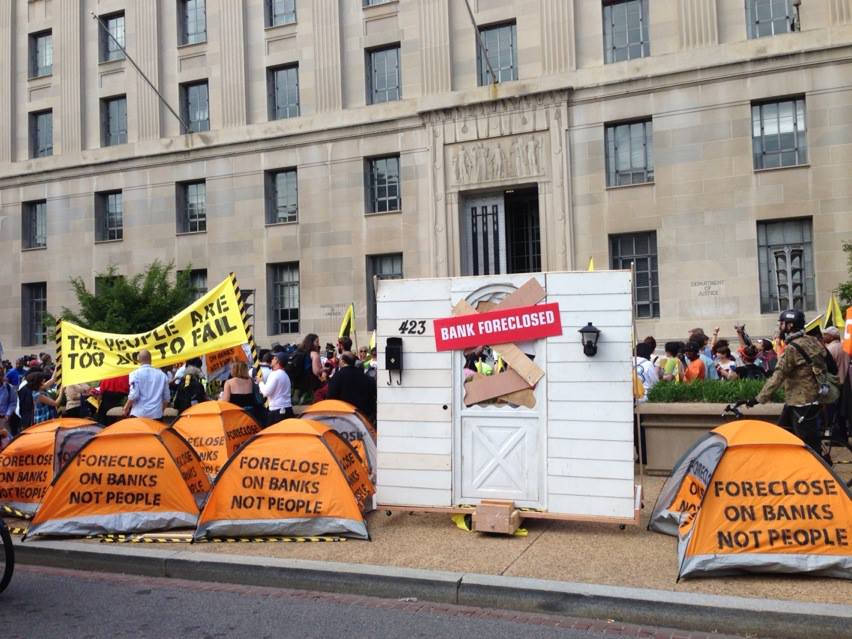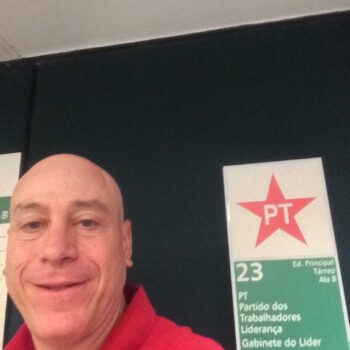Last fall was the 10th Anniversary of the Occupy Movement. Participants and pundits alike gave it credit for accomplishing two major goals. First, Occupy did what community organizations and other progressive groups had failed to do: move tens of thousands of people into action against extreme wealth inequality and build the awareness of millions more. Second, it helped to reinvigorate our side of the class war in the United States — eventually leading Bernie Sanders, an avowed socialist, to become a credible candidate for President of the United States. In a similar vein, the uprising following the murder of George Floyd in the summer of 2020 moved the concept of police abolition into the mainstream. The next fall, over 40% of voters in Minneapolis cast their ballots in favor of abolishing the police force. These are two examples of ruptural moments — moments when a mass mobilization of people upends the status quo and creates the opportunity for significant societal change.
Ruptural moments by themselves rarely lead to substantive changes in people’s material conditions or the dismantling of the status quo; they need to be situated within a dynamic movement ecosystem. During and after the uprising in the wake of George Floyd’s murder, Minneapolis took major steps toward abolition precisely because of the work of groups like Black Visions and Reclaim the Block, which were formed after the uprising around Jamar Clark’s murder in 2015. Those organizations, in concert with progressive elected officials and allied community organizations, created the possibility for an election to vote for a new kind of police department in Minnesota — and then went out and did the work to get over 40% of the vote. In this special series of The Forge, I dive into different kinds of ruptural moments — that is, moments when the river of history has charted a new course. It is critical to learn about the role of rupture in the United States, how more of it might expedite the process towards liberation, and how it works in concert with elections, politics, campaigns, and other forms of change-making. Finally, it is important to think about how we foment rupture. Do we wait for things to pop off and then undergird them, or can we create ruptural moments?
No two ruptural moments are the same, but there are some common characteristics. First, there is the scale. Instead of hundreds of the usual suspects taking part in a protest, in a ruptural moment, thousands or hundreds of thousands of people hit the streets. Second, during a ruptural moment, participants are willing to engage in a huge escalation of risk. Thousands might brave tear gas, pepper spray, and police or military force. Third, ruptural moments open a window into a change in thinking — opening the eyes of a society to the fact that a dictatorship is fragile or that Indigenous sovereignty must be respected or that Black folks have a different lived experience than white folks. In other words, in changing how space or public order works, ruptural moments contest the story of the dominant culture.
There are three major ways to create ruptural moments. First, organizers work for months in a disciplined way to achieve the scale necessary for something major to happen. Second, a smaller group of organizers attempts something bold and keeps at it, enabling it to scale as others are captivated by the boldness of the tactic or demand and launch copycat actions or undergird the movement. Third, things just pop off. Something gets launched, usually in reaction to external events, and anger or excitement drives mass support, which then scales the movement.
Of course, sometimes the elements complement each other or the rupture comes out of a hybrid of these different sparks. In Chile, the 2019 uprising started when high schoolers jumped the turnstiles of the Metro after fares went up by 30 pesos. The government brutally repressed them, causing a mass uprising. One of the chants was, “It’s not 30 Pesos; it’s 30 years!” — a reference to 30 years of neoliberal democracy in Chile since the end of the Pinochet dictatorship in 1988. In the wake of the uprising, a small number of left representatives in Parliament made the decision to negotiate with the President and push for a referendum to win a constitutional assembly.
Ruptural projects — and organizations that can foment ruptural moments — play a unique catalyzing role within the movement ecosystem. Yet, too often, when organizers think about our movement ecosystem, we do not name ruptural projects and organizations as necessary components of our work. Rather, we tend to think about direct action as something we engage in after we move through a series of more conventional organizing approaches. What if we had formations and organizers who were primarily focused on engaging in and fomenting ruptural moments? What would those organizations look like? And how would they prepare?
Ruptural formations need three key components to succeed. First, they need to have some ability to reach a certain turnout size in order to have the potential for the contestation that creates rupture. State forces do not see a 20-person protest as a threat, but some hundreds of people holding space creates a dilemma for the state. Either the protest wins, holds the space, and then scales — like Occupy — or it provokes a counter-reaction, which then leads to more folks coming out to participate, like the uprisings for Black lives. Many ruptural formations can show up to undergird ruptural moments when they happen; in order to foment rupture, they need folks with enough organizing chops to get to an initial scale.
Second, ruptural formations need to be able to take huge risks. Much of what causes rupture is the counter-reaction of the police or other security forces. People see the courage taken on the frontlines and turn out to support, leading to increasing state violence or the winning and holding of space. Organizations with lots of foundation funding or large staffs are substantially less likely to try to foment ruptural moments for a variety of reasons, including alienating funders, organizational liability, and the difficulty of reaching consensus around hardcore actions.
Finally, ruptural organizers need to be free-wheeling and open. Most ruptural moments start with an idea — a tactic that might not resonate with existing organizers. With Occupy, the idea of sleeping in a park or using the People’s Mic did not appeal to many organizers, who were more inclined to organize an action and then go home, not hold spaces for days at a time.
Conditions also play a key role in ruptural moments. Most efforts do not simply start from scratch. There is a catalyzing moment — a climate catastrophe or a state murder of a Black man — that brings people out into the streets. Sometimes, these actions scale because the level of anger is so high. Sometimes, they last because organizations provide jail support and other infrastructure that keeps frontliners in the streets. And sometimes, pure persistence wins the day, as organizers who have been working on something for months or years break through into popular consciousness. The best recent example of the combination of conditions and preparation is the January 6th insurrection at the Capitol. Paramilitaries and right-wing extremists had been organizing for quite some time. They were willing to take the risk to call for armed rebellion and the overturning of democracy. They also did the work to get folks to DC. Finally, they had a huge boost because there was a president willing to echo their call that the election was stolen.
We know there are going to be extreme weather events and climate disruptions. We also know that state murder of Black and brown people is going to continue. And, unfortunately, there is likely to be some form of contestation of the 2022 elections. The housing crisis is only going to deepen. All of these events are potential conditions around which we can create rupture. But ruptural moments do not merely happen when terrible things do. Rupture is created by ongoing crisis conditions and some kind of catalyzing moment, either organized or unplanned.
In this series, I plan to discuss at least three different ruptural moments — the sit-in movement, the Battle of Seattle, and the Ferguson uprisings — and the lessons we can draw from each as we try to transform our world today. I hope that the articles will serve not only as a means of moving discussion forward but also as a spark for us to build more teams capable of fomenting disruptive moments. After the series is published, we plan to create discussion groups about rupture, and I hope to find co-conspirators interested in thinking with me about how to support these moments.
My journey toward thinking about rupture has not been a straight line. I was a queer college student in New York City at the height of the AIDS crisis. I saw ACT UP’s use disruptive action to deliver significant wins on treatment in the face of tens of thousands of superfluous deaths. At the start of the Gulf War in January 1991, I joined a spontaneous march of what seemed like 300,000 New Yorkers to the UN and felt the power. But when I joined the labor and community organizing movements, I was taught that we had to build power over the long haul through base building, legislation, and negotiations with targets. Direct action was a tool in the campaign toolbox, but it wasn’t the primary means of building power. I absorbed those lessons. During the Battle of Seattle, I was knocking on doors in St. Louis rather than taking to the streets — where my heart said I should be.
But between 2008 and 2010, the banks crashed the global economy, only to make out like bandits while homeowners dealt with mass foreclosures and a loss of $1 trillion in equity across the US. Homeownership rates for families of color plummeted. Base building was inadequate to address the scale of the problem. When my political home, ACORN, was destroyed, I decided that picking the boulder back up and rolling it up the hill was not the solution. Something else had to be.
These days, we have a more robust interplay of politics, strategic campaigns, narrative, and base-building work, but I still worry that truly powerful, uncurated mass actions are still under-resourced in our movement. We cannot dismantle systems of racial monopoly capitalism merely through electoral power or base building alone. We need mass scaled action. I hope you will join me in generative discussion and debate as we work to figure out how we can build and flex our collective disruptive muscle.

